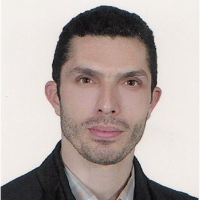The Survey of Psychological Characteristics (personality and cognitive) of Elite Cyclists of Iran
Author(s):
Abstract:
The purpose of this research was to study the psychological characteristics of national cycling teams of Iran in both junior and senior age groups in speed and endurance disciplines. The main research question was discussed as what is the underlying psychological characteristics (personality – cognitive) lead to the success of Iranian elite cyclists. The statistical population included all members of national cycling teams of I. R. Iran in both junior and senior groups of endurance and speed disciplines. Due to the number of statistical population members which was 22 as well as the descriptive pattern of the current study and the method of survey، sampling has not been accomplished and all of statistical population was assumed as sample. The measurement instruments were used in this study was Tehran– Stanford- Bineh Intelligence Scale، Hardiness Questionnaires Madi and Kobasa، and Minnesota Multiphasic Personality of Restructure Form Inventory (MMPI-2RF). Reliability، Validation and Standardization of the last mentioned inventory have been carried out by Kamkary and Shokrzadeh (2009). Eventually، multiple analysis variance and multivariate regression statistical models were used in order to analyze the data and to test the research questions. The results showed that there was no significance difference between the profile of Iranian cyclists and intelligence standards and only working memory of these people was higher than normal extent. Commitment rate، controlling and hardiness (overall) were higher than average or expected level in cyclists، while challenging was lower than the expected level in population. The appearance of depression symptoms، hysteric، psychopathic، schizoid and manic in cyclists were within the level the expected in population، but paranoid، anxiety and stress were higher than expected and hypochondrias specification is less than expected of society norms.
Keywords:
Language:
Persian
Published:
Sport Psychology Studies, Volume:1 Issue: 1, 2012
Pages:
69 to 80
https://magiran.com/p1201510
مقالات دیگری از این نویسنده (گان)
-
Effect of 8 Weeks Movement Computer Games with Emphasis on the Role of Providing Instruments on the Gross Motor Skills of Children with Movement Disorders
Mojtabi Brarzadeh Gerivdehi, Mohammadbaqer Forghani Ozrudi*
Journal of Cognitive Sports,


